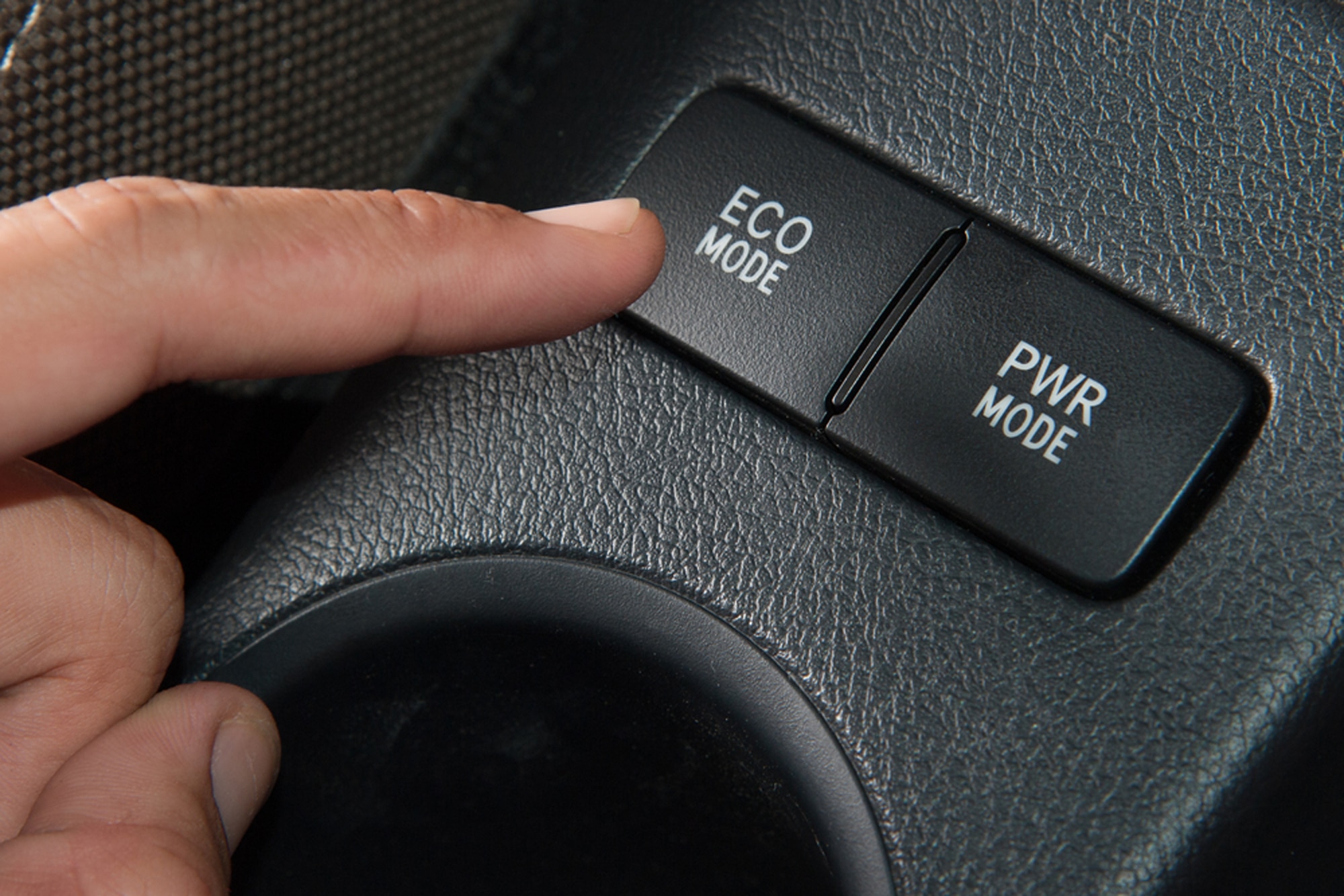What Does Eco Mode Do?
Eco mode in cars helps your car operate in a more fuel-efficient manner. Here's how it works and when you should give it a try.
 Shutterstock
Shutterstock
Article QuickTakes:
Modern cars are often built with a wide range of different drive modes that can be selected. Some make obvious changes to the driving experience, and some are subtle. You may ask: "What does Eco mode do?" Although the exact name of any of these modes may change from one automaker to the next, the goal is always the same. Drive modes tailor a car's driving dynamics to fit both the current conditions and the driver's preferences. Here we'll look at Eco mode in cars to explain what it does and when you might, or might not, want to give it a try.
The most common name for this mode is Eco, but it goes by many other names depending on the automaker. You may also see it referred to as Econ mode or Active Eco mode. The names may change, but this mode functions pretty much the same way no matter its name.
What Does Eco Mode Do?
The goal behind Eco mode is simple: it strives to improve your fuel economy, which not only reduces your fuel expenses, but also reduces your overall emissions. It does this by changing how a few key systems in your car function.
It starts by reducing throttle response. This means that when you press on the accelerator, the car won't get up to speed as aggressively. A light foot on the gas yields better fuel economy. Eco mode automatically makes the car react as though you're driving that way, even if you forget to take it easy on the gas pedal.
The transmission mapping, or how your transmission shifts, is also adjusted in Eco mode. The car won't shift as aggressively as it may in other modes since the focus is not on providing peak performance, but peak efficiency. You may hear the difference in how high the engine revs in between shifts when using Eco mode.
This mode can also aim to reduce the work your engine needs to do by altering how air conditioning and electrical systems work. For example, you may find that the AC turns off briefly in certain circumstances. It won't simply stop blowing cold air when you need it, but it will reduce how often it runs, possibly letting the air in your car get slightly warmer intermittently rather than keeping the interior at a constant cool temperature.
When Should You Use Eco Mode?
Any time you want improved fuel efficiency, push that Eco button. Whether it's a longer trip or just a short one for daily errands, using Eco mode will help your car automatically behave in ways that will improve fuel efficiency. Some people only use this mode once they're cruising on the highway. Other people put their cars in Eco mode all the time. Either way is fine. It's up to you when to use Eco mode so do whatever works best for your lifestyle and how you like to drive.
When Should You Not Use Eco Mode?
Eco mode will improve your fuel efficiency, but it comes at the price of performance. If you want the maximum performance out of your vehicle, then selecting another mode may be best. If you want strong acceleration especially, then Eco mode may not be the best option. Remember, it's a setting you can use at any time. You don't have to leave it in Eco mode for a whole trip. If you want to try Comfort or Sport mode for some of your driving and then use Eco only part of the time, that's okay.
It's also not necessarily the mode you want to use if you're driving in poor weather. Many cars with drive modes have a Snow mode for when road conditions are poor and traction is a priority. Eco is also not the best option off-road driving. If your vehicle has off-road modes, then use those when you leave the pavement so you have better traction and control in off-road terrain.
Your Car Your Mode
Drive modes help you get the most out of your time behind the wheel by adjusting how your car operates to meet your needs. If you put a priority on fuel efficiency, whether for the reduced environmental impact or the reduced fuel expense, then make sure you put your car in Eco mode as often as possible.



